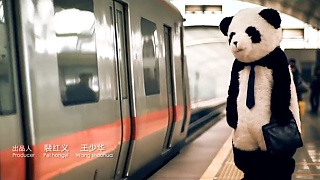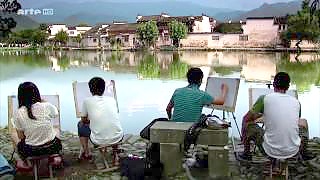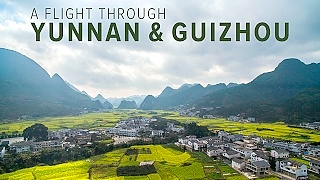 Boat ride through karst cave – Dragon Palace, GuiZhou 貴州安順 龍宮 溶
Boat ride through karst cave – Dragon Palace, GuiZhou 貴州安順 龍宮 溶
Related Videos
Featured Videos

|
This city lies on a beautiful island in HangZhou Bay.
The island is 500square kilometers in size and connected to the mainland by a bridge.
|

|
With Walk East ...
|

|
Including BeiJing, Hong Kong, MuTianYu Great Wall, HuaShan mountain, Xi'An, ZhangJiaJie, TianMen mountain, FengHuang, the LongShen rice terraces, YangShuo, GuiLin ...
|

|
11 / 11 - 'Singles' Day'.
Maybe being an inseparable 11 is the better way compared to 11 ? 2 (1). Maybe that other 1 is art, or all humanity. Whatever it is for you - live more ...
Four great romantic short stories from SiChuan province, in south west China ...
If you can, please help us out with a donation (see the top of the sidebar on the right)
|

|
One can see this distinction in the wider society too - East vs. West; cultures with different foundations - long term (family, infrastructure, community, the arts) versus short term (hype, sex, gossip, war). Mature versus immature. We versus me.
The immature mind thinks 'me'; the mature mind understands that life is really about 'we'.
Maturity is when one grows beyond the narcissism phase *.
'I' am just a small part of a bigger 'I' - humanity.
With Dr. Robert Lustig ...
One is controlled when one believes what one has been told (sold).
Freedom is removing these mind chains and seeing reality.
-----
* (footnote) At BB, we think that narcissism is a development phase that most transition out of; but some stay there and it can become exaggerated. The traditional views might also be true; likely, there is an interplay involved.
-----
-----
Aside #1 : Q : Why does BB have so much content about health - nutrition and mental well-being ?
A : Because it is fundamental to everything else; one cannot see the beauty of life if one's mind is mixed up; one cannot live life to the full if one is ill.
-----
-----
Aside #2 : Confucius : One can grow from everybody one meets. On life's journey, one will meet wise people - learn from them; one will also meet foolish people - look deep within to see if one also has these follies.
|

|
HuangShan (Yellow Mountain) is a group of mountains in AnHui province, east China.
Famous for its rugged peaks, unusual rocks and tenacious pine trees, this beautiful landscape is a UNESCO World Heritage Site.
|

|
Best month to see the yellow canola fields is March.
|
Tag search ?

 Boat ride through karst cave – Dragon Palace, GuiZhou 貴州安順 龍宮 溶
Boat ride through karst cave – Dragon Palace, GuiZhou 貴州安順 龍宮 溶
 Boat ride through karst cave – Dragon Palace, GuiZhou 貴州安順 龍宮 溶
Boat ride through karst cave – Dragon Palace, GuiZhou 貴州安順 龍宮 溶





